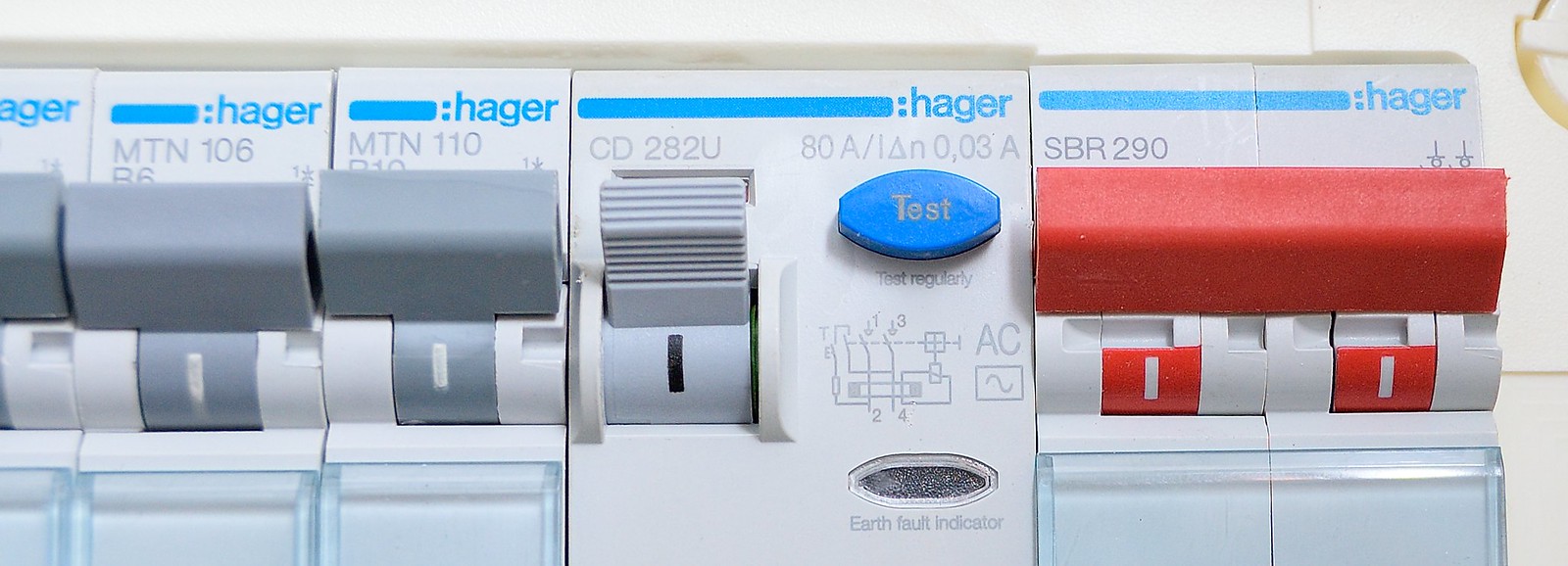
After a full domestic rewire, 7months in with no changes/no new appliances and we started to have the 'fuse box' tripping. How and what could this be?
Electrical installations can go wrong over time but the often quoted reason are:
- wiring within the installation coming loose/damaged
- cuts and damage to wires (rodent or nail damage)
However one thing that we may ignore is that electrical appliances can also go wrong as I found out.
My situation to the untrained eye appeared strange - no new electrical appliances installed but the fuse box (more correctly, consumer unit aka CU) would intermittently trip at different times of the day, even when there were limited items switched on and no items turned on at the time of the trips and whether conditions varying. Eventually, we were able to identify which circuit was causing the trip (leaving other circuits off and finding the circuit that caused the CU to trip) and it turned out to be the circuit for the power sockets.
To resolve completely, a qualified electrician came to diagnose and this is what I learned.
The tripping at the CU was with the RCD and not with the MCB. But what are these? Fuse boxes were historically just that - a box a physical fuses that were for the circuits installed. When there was an overcurrent (each fuse only allows a certain current flow) then the fuse would blow however in the modern electrical installations MCB (mini circuit breaker) provide this functionality and no need to physical fuse replacement - its simply a trip switch to reset.
For my problem however, the MCB's weren't tripping but instead it was one of the RCDs. RCDs are used to group a set of MCBs and their role is to monitor changes in inbalance of electrical current; simply put current flows around the circuit and "what goes in must come out" and if there is "current leakage" the RCD will trip. The reason for the trip out is because if the current is not coming back on the circuit then it may be that the current is going somewhere else - like going through a person who has accidentally cut a live wire.

Electricians can perform continuity tests which tests if there is a completed circuit - unlikely to be my problem since there was normally constant power. However, more importantly to an issue like this the electricians can perform insulations resistance tests (sometimes refered to as insulation test or IRT) whereby each circuit, such as the power socket circuit ring or lighting ring etc, can be tested individually. Various DC currents (typically 250v, 500v and 1000v) is fed down the circuit by test equipment (Megger or Fluke being common manfucturers used in the UK) and it measures the returned feedback - there should be a high resistance value (>1mOhm) indicating that there is no leakage across the circuit. If there is significant leakage during insulation test (some leakage is natural and leakage can be affected by temperature conidtions) it means that some current is jumping away from the live wire potentially to the netural or earth wires or perhaps some other metal object going to earth (think copper pipe) and this leakage can be dangerous. It also means that such a leakage is caught by the RCD monitoring the circuits to avoid potentially leathal conditions. The one important thing to note is that whilst the UK has 240V it is important that the insulation test is performed at higher voltages as this performs the stress/pressure test to catch any issues.
A better explaination (start at 5:49)
In my case the insulation test results came back reporting no fault in the wiring in the walls which meant that it was an appliance that was responsible for the current leakage. The RCD was also tested to ensure that it was not faulty and operating within its constraints. With all items in the CU side verified as safe, the tracking down the source of problem therefore became much simpler as it meant that with the identified circuit being fine, it was something plugged into the circuit. Therefore each electrical appliance plugged into the circuit could be isolated and tested individually under a PAT (portable appliance test) insulation resistance test. Anyone working in an office will have seen stickers on their PCs or electrical items showing when the item was last PAT tested. Again, the purpose of the test was to determine - by applying a 240v current and measuring the return - any issues with current leakge and luckily (and inexpensively) for me it turned out to be a power chord that was shorting; all other appliances that were plugged into the affected circuit was clear. The power chord (and it's attached appliance) was replaced and no more issues.
Sometimes it's good to guess and trial and error the solution but for ~100 GBP for IRT and PAT test to confirm is better peace of mind and much more conclusive - especially when it was in my favour to justify the replacement of the appliance that I was trying to replace for a long time (even though the replacement of the power chord was enough!).
No comments:
Post a Comment